N.S. Education
Province doubles funding to Junior Achievement
Every Grade 9 class in the province will have Economics for Success program
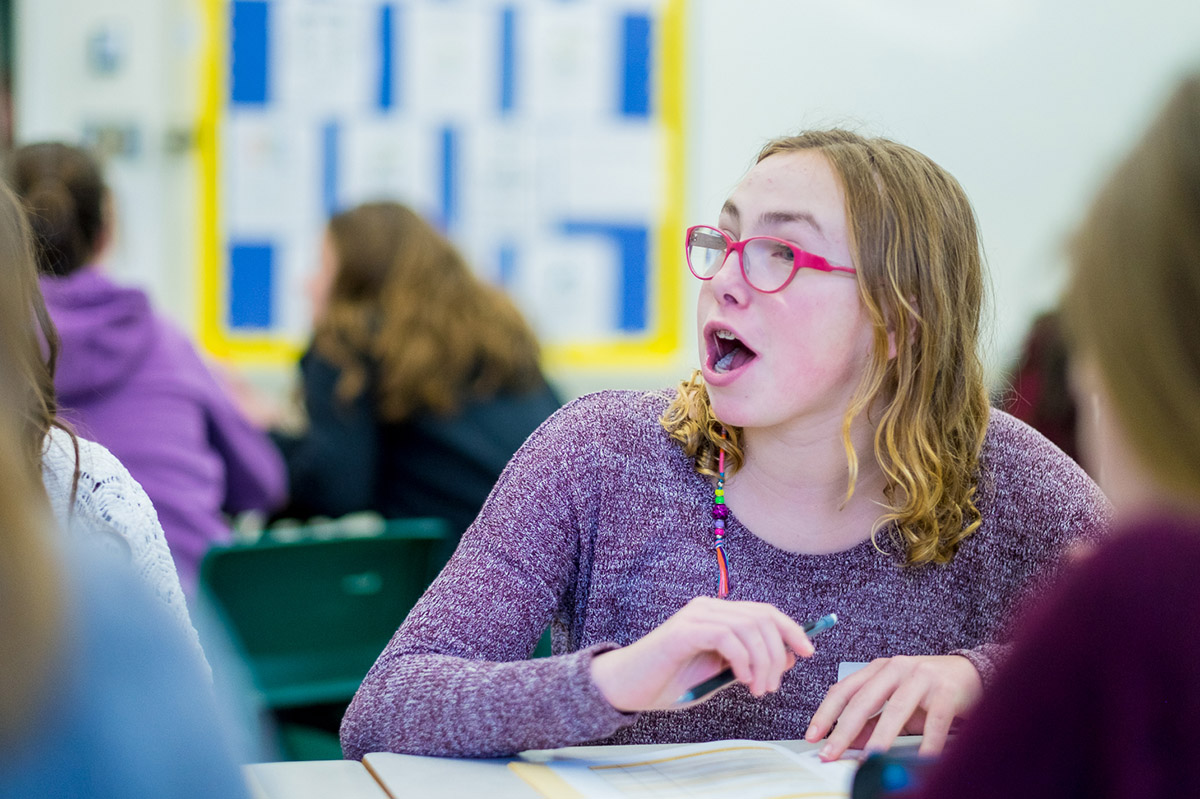
caption
[media-credit id=101057 align=”alignnone” width=”726″]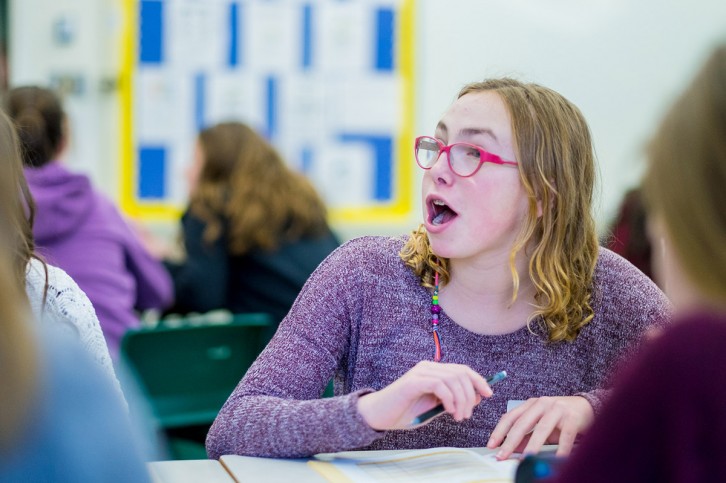 [/media-credit]
[/media-credit]
There is a picture of a cauliflower on the board in the classroom.
“How much do you think it costs?” asks Junior Achievement volunteer John Mullally.
Normally Mullally works for Office Interiors, but today he’s playing teacher to about 30 Grade 9 students at Ellenvale Junior High School in Dartmouth.
Hands shoot in the air. “Five dollars!” “Four fifty!” The students can’t hold back and start yelling out guesses.
A dollar figure appears under the cauliflower. $6.99.
This harsh truth and others, such as budgeting, the cost of rent and the importance of getting tenant’s insurance are all touched on in Junior Achievement of Nova Scotia’s Economics for Success day-long workshop.
[idealimageslider id=”6054″]
These Junior Achievement workshops happen regularly in classrooms across the province during the school year. This one is getting a special guest.
The announcement
Karen Casey, Minister of Education and Early Childhood Development, has entered the room of ninth graders to make a provincial proclamation.
After a preamble about the importance of youth education, she says the provincial government is going to give $125,000 to the Junior Achievement of Nova Scotia program.
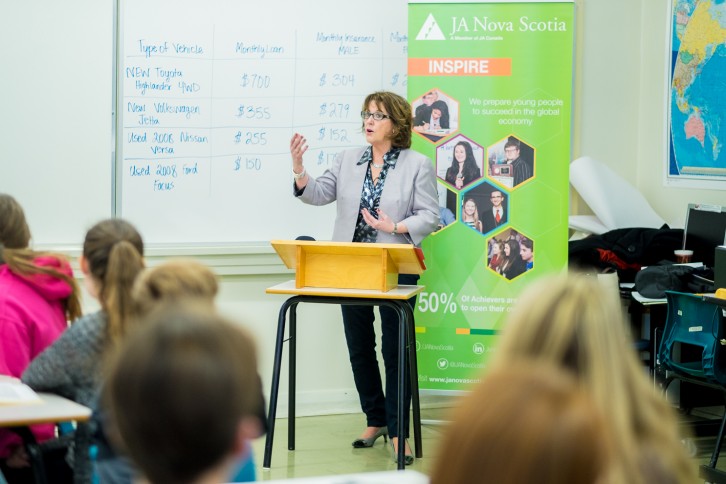
caption
Minister of Education and Early Childhood Development Karen Casey announces the partnership between the province and Junior Achievement to a class of ninth graders at Ellenvale Jr. High in Dartmouth.Last year the province gave them $50,000. This year, with the help of the provincial government Junior Achievement aims to be in every Grade 9 classroom across the province. That’s 382 classes of ninth graders; more than 8,000 students. All learning about the price of cauliflower.
She says the decision to partner with Junior Achievement of Nova Scotia came after a survey of teachers, parents and community members in Nova Scotia listed these four improvements wanted for the public school system:
- Financial literacy before graduation
- Exposure to job opportunities
- Skill development
- Confidence building
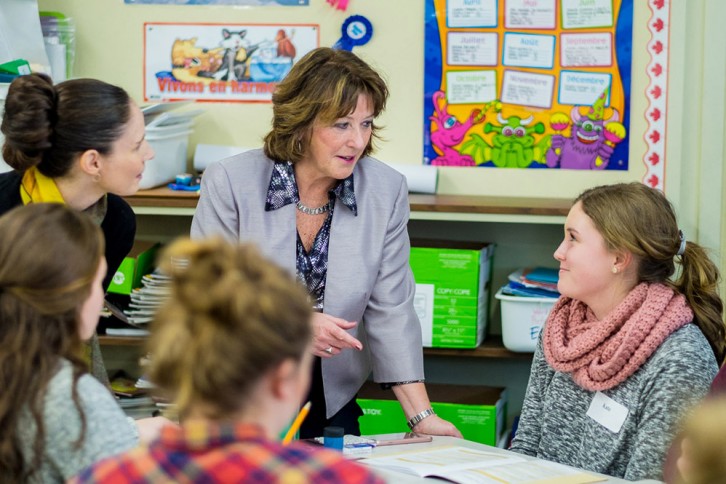
caption
Karen Casey, Minister of Education and Early Childhood Development talks to students about their future plans.The ‘big, hairy, audacious goal’
After Casey leaves the podium it’s taken by the president and CEO of Junior Achievement of Nova Scotia, Kristin Williams.
Williams says, “We believe in a future where every school, business, community and young person is engaged in JA, resulting in Nova Scotia having the highest rates of youth entrepreneurship, of employment and of community involvement in Canada.”
As to where we currently stand in those rankings, she says, “I’m not sure.” But she calls their vision, “a big, hairy and audacious goal.”
“It’s the kind of goal you set that’s about 20 to 25 years off. And you actually only have about a 50 per cent chance of getting there. But that doesn’t mean you shouldn’t make the goal and that doesn’t mean you shouldn’t strive for it.”
The Money
Junior Achievement’s financial goal for this year is to spend $900,000 to reach 14,000 students. That’s the 8,000 ninth graders mentioned earlier, plus 6,000 more students in different grades.
In 2015 they brought in $745,270. Most of that was donations, gifts and money from the province. They spent a little over half of it, $387,811, on their programs; $357,579 went to administration and fundraising.
Volunteers
The program relies heavily on volunteers. Williams said more than 900 people will volunteer their time this year to help the organization reach its goals.
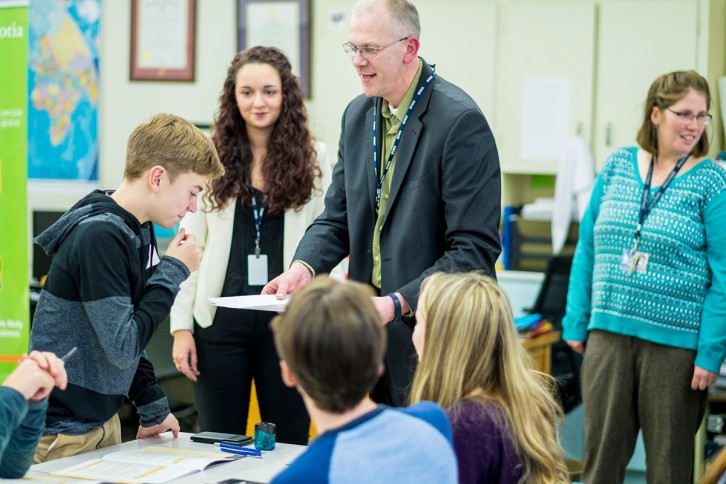
caption
Volunteer John Mullally offers student Cameron a random pay stub. Whatever he gets, he’ll have to base his budget on. It’s the difference between traveling by yacht or public transit.After the announcement, Casey mills about with the students as they resume their budgeting.
When volunteer Mullally asks the students how much they’ve budgeted for a month’s worth of food, a boy named Cameron shouts, “Nine hundred dollars!”
Mullally passes around randomized pay stubs. This is the reality they will need to fit into their budget.
“What the heck! A welder?” asks Cameron.
He’ll need to be careful not to spend all his salary, lest he be in the territory of deficit budgeting – spending more than you make.
For a lot of the kids it’s a reality check. One that many adults still deal with.
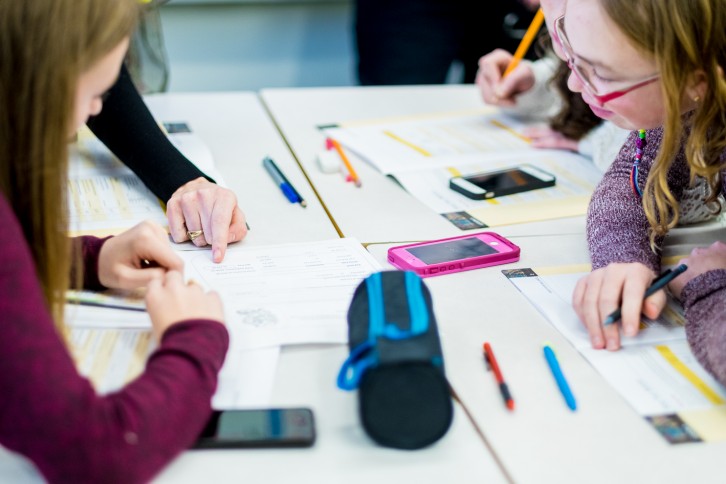
caption
Four classmates deliberate over what should stay and what should go in their revised budget.“I think it’s interesting to see how much you’ll be paying for everything when you’re on your own,” says another student as she and three others at her desk figure out how to survive on a pizza delivery salary.
When homeroom teacher Mme. Boudreau asks Cameron about his breakfast plans, Cameron says, “I’ll just buy a bag of Lucky Charms.”
“Hmm, that’s a pretty expensive cereal,” Boudreau remarks.
“Well, I guess I’ll get a bag of oatmeal instead,” responds Cameron.
About the author
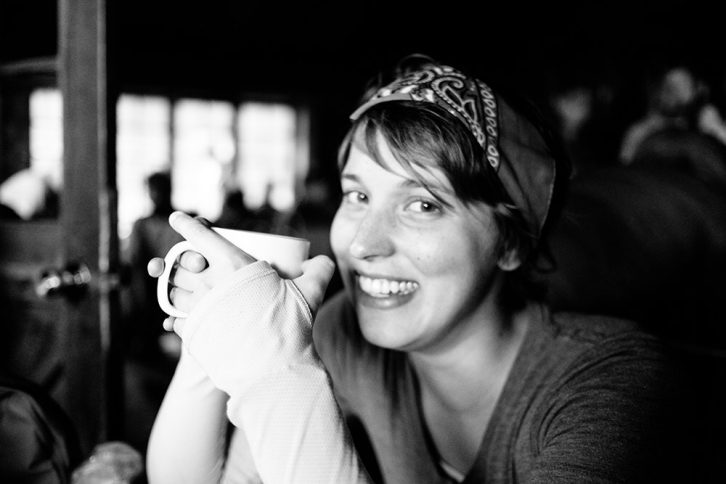
Mel Hattie
Mel Hattie is a travel journalist from Canada's east coast. She's currently in the MJ New Ventures stream at the University of King's College....